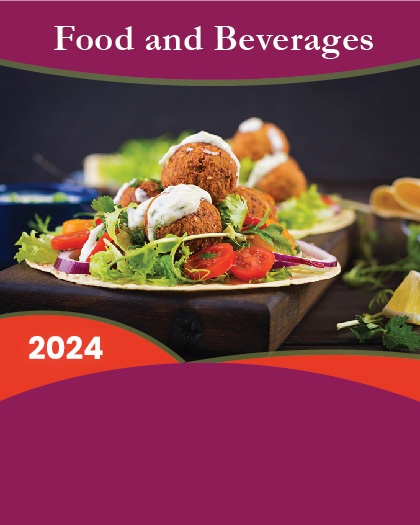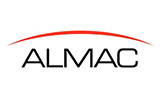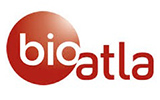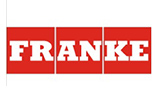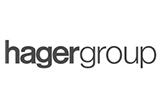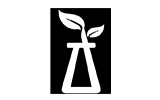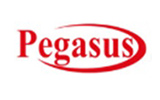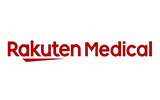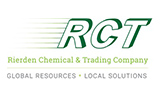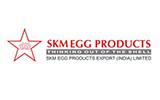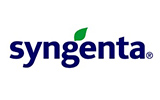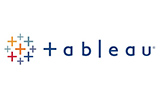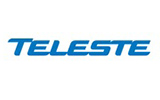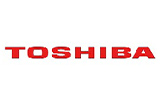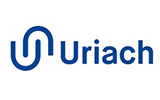
Report Overview
An increasing demand for halal meat, expanding urban areas with the growing population, and the development of cold storage and logistics infrastructure for meat distribution are expected to drive Saudi Arabia Meat Market during the forecast period between 2025 and 2033.
Saudi Arabia Meat Market - Industry Trends & Forecast Report, 2033
Saudi Arabia Meat Market size was estimated at USD 5.3 billion in 2024. During the forecast period between 2025 and 2033, Saudi Arabia Meat Market size is projected to grow at a CAGR of 7.6% reaching a value of USD 9.8 billion by 2033. Prominent drivers of the market include rapid population expansion, increasing disposable incomes, and a strong preference for diverse meat products. Health-conscious trends favoring lean meats like chicken and fish, coupled with the booming tourism industry and urbanization, are amplifying demand. The expansion of retail spaces, such as supermarkets and hypermarkets, enhances accessibility to meat products, while government initiatives promoting food security and domestic meat production further support the market. Innovations in processing and preservation, reliance on meat due to limited agricultural capacity, collaborations with global suppliers, the shift towards protein-rich diets, and the rise of online meat shopping platforms are additional factors propelling the market forward.
Saudi Arabia Meat Market
Meat - Overview
Meat, derived from animal flesh, is a key dietary component available in various forms, including beef, poultry, lamb, and seafood, each offering unique flavors, textures, and nutritional benefits. Its processing involves stages, such as slaughtering, butchering, curing, smoking, and aging. Widely used in dishes like steaks, stews, and grilled items, meat is a rich source of protein, essential amino acids, vitamins, and minerals such as iron and zinc. It supports tissue repair, strengthens the immune system, prevents iron deficiency, and promotes overall health. Additionally, meat contributes to cultural preferences, adapts to diverse cuisines, and generates significant employment opportunities.
Saudi Arabia Meat Market
Growth Drivers
Increasing Demand for Halal Meat
The increasing global and domestic demand for halal meat is significantly driving Saudi Arabia Meat Market. As part of its Vision 2030 initiative, Saudi Arabia plans to establish the world?s largest halal food and products center, enhancing its position as a global leader in the halal market. The center will be focused on ensuring imported meat and poultry products meet stringent halal requirements through robust certification processes and research. Leveraging its geographical position and Islamic heritage, the Kingdom aims to boost the credibility of its halal meat exports, foster global collaborations, and create employment opportunities for nationals. By strengthening its halal ecosystem, Saudi Arabia is well-positioned to meet the rising demand for halal meat while reinforcing its reputation as a trusted supplier of premium halal products globally.
Challenges
High Cost of Meat Production and Processing
The high cost of meat production and processing poses a significant challenge to the growth of the Saudi Arabia Meat Market. Factors such as expensive feed imports, reliance on advanced technology, and stringent halal compliance requirements drive up production costs. Additionally, the arid climate necessitates substantial investments in water and energy resources for livestock farming, further inflating expenses. These costs are often passed on to consumers, limiting affordability and demand. Moreover, the lack of local production sufficiency leads to increased reliance on imports, exacerbating expenses. Addressing these challenges is critical to fostering sustainable growth in the Saudi Arabia Meat Market.
Impact of Escalating Geopolitical Tensions on Saudi Arabia Meat Market
Escalating geopolitical tensions can significantly impact Saudi Arabia Meat Market. Political, military, economic, and trade tensions and sanctions disrupt global trade routes, leading to delays and increased costs in meat imports, on which the country heavily relies due to limited local production. Fluctuations in oil prices, a direct outcome of geopolitical instability, affect the nation's economic stability and consumer purchasing power, dampening demand for premium meat products. Moreover, diplomatic disputes can alter trade agreements, restrict market access, or impose sanctions, further complicating supply chain dynamics. Rising transportation costs and logistical challenges due to conflict zones add to the burden. To mitigate these risks, the Saudi meat market must prioritize diversifying its import sources and strengthening local production capabilities.
Saudi Arabia Meat Market
Segmental Coverage
Saudi Arabia Meat Market - By Product Type
Based on product type, Saudi Arabia Meat Market is divided into Red Meat, White Meat, and Seafood segments. The white meat holds the largest share of Saudi Arabia Meat Market by product type. In the first half of 2024, the country achieved a record-breaking 558,000 metric tons of poultry meat production, reflecting a 9% year-on-year growth. This significant expansion can be attributed to several factors, including the implementation of modern technology and stringent biosecurity measures in poultry farms. Saudi Arabia's Vision 2023, which aims for the Kingdom to become self-sufficient in poultry meat, plays a key role in these advancements. The government is also providing financial support for projects that integrate innovative production technologies to boost domestic output. With an increased focus on sustainable agriculture and food security, poultry production is expected to remain a dominant force in Saudi Meat Market. The ongoing growth in the sector not only supports the Kingdom's national food security but also strengthens its position as a leading producer of white meat in the region, contributing significantly to both economic development and job creation. Meanwhile, the seafood segment is expected to record the fastest growth rate during the forecast period. The increasing demand for seafood in Saudi Arabia is driven by its geographical advantage, with the Kingdom surrounded by the Red Sea and the Arabian Gulf. Seafood has long been a staple in the local diet, and as the younger population adopts new lifestyles, the demand for seafood has surged. Additionally, with social and economic shifts in the country, seafood consumption has grown in popularity. To support this trend, Saudi authorities are promoting the development of fisheries and aquaculture, which is expected to significantly contribute to the growth of the seafood market during the forecast period.
Saudi Arabia Meat Market Size
Saudi Arabia Meat Market - By Form
By form, Saudi Arabia Meat Market is divided into Fresh, Frozen, and Processed segments. The fresh segment holds the highest share in Saudi Arabia Meat Market by form. It is driven by consumer preference for unprocessed, high-quality meat. Fresh meat is widely regarded for its superior taste, texture, and nutritional value, aligning with traditional culinary practices in Saudi households. The demand is further supported by the increasing availability of fresh meat through improved cold storage and distribution infrastructure, ensuring consistent supply and quality. Cultural and religious practices, including the emphasis on freshly slaughtered halal meat, also play a significant role in sustaining this demand. As consumer awareness of food quality rises, the fresh segment continues to dominate the market, reflecting the prioritization of freshness and authenticity in meat consumption.
Saudi Arabia Meat Market Share
Saudi Arabia Meat Market - By Distribution Channel
Based on distribution channel, Saudi Arabia Meat Market is divided into Hypermarkets & Supermarkets, Food & Drinks Specialists, Convenience Stores, Cash and Carry/Warehouse Clubs, and E-Retailers segments.
Competitive Landscape
Major players operating in Saudi Arabia Meat Market include Halwani Bros, ARASCO FOODS, Almunajem Foods, Americana Group, BRF S.A., Mahmoud Al Nasher and Partners Co., Sunbulah Group, Tanmiah Food Company, and The Savola Group. To further enhance their market share, these companies employ various strategies, including mergers and acquisitions, partnerships, joint ventures, license agreements, and new product launches.
Recent Developments
In November 2024 - Fam Foods, in collaboration with the Kobe Beef Association, introduced halal-certified Kobe beef to Saudi Arabia.
In July 2024 - Abu Dhabi-based food and beverage group Agthia, owned by ADQ, launched a USD 24.5-million meat processing facility in Jeddah, Saudi Arabia. Spanning 9,000 square meters in Jeddah?s Industrial City 1, the plant aims to produce over 9,000 tons of processed proteins annually, with exports planned for over 25 countries.
In January 2024 - Saudi Arabia lifted a 20-year ban on South African meat imports, enabling the export of Halaal beef and lamb products.
Key Players
Halwani Bros, ARASCO FOODS, Almunajem Foods, Americana Group, BRF S.A., Mahmoud Al Nasher and Partners Co., Sunbulah Group, Tanmiah Food Company, The Savola Group
By Product Type
Red Meat
White Meat
Seafood
By Form
Fresh
Frozen
Processed
By Distribution Channel
Hypermarkets & Supermarkets
Food & Drinks Specialists
Convenience Stores
Cash and Carry/Warehouse Clubs
E-Retailers

